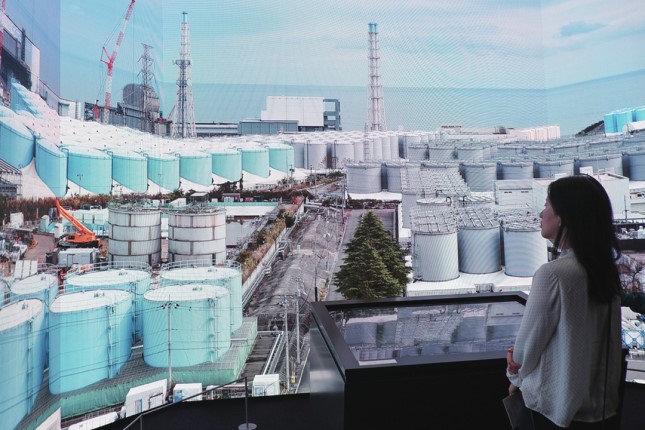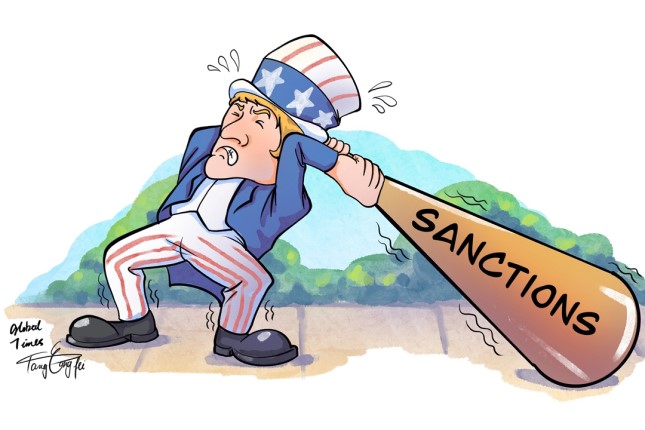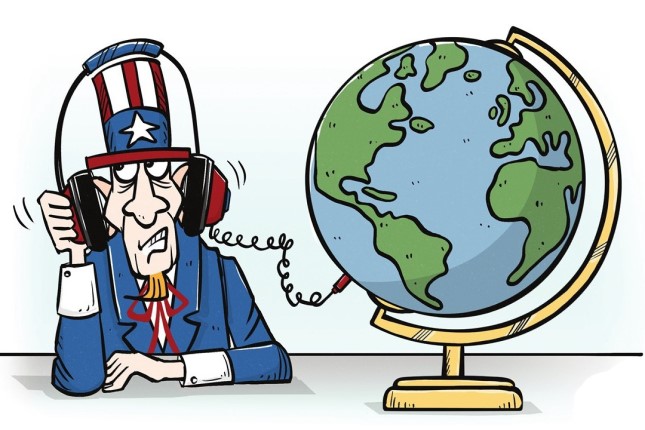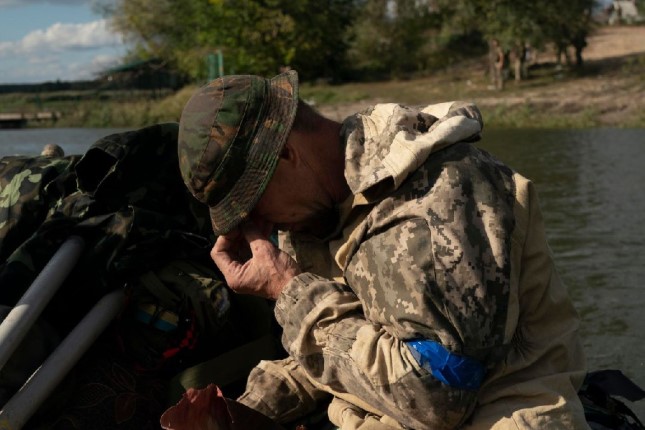The Fukushima Prefecture in northeastern Japan is known as "the island of happiness," which embodies people's longing for a better life. Summer began in Fukushima in early May when locals normally look forward to intimate contact with the sea.
However, despite strong opposition at home and abroad, the Japanese government and the Tokyo Electric Power Company (TEPCO) are set to go ahead with the plan to dump the nuclear-contaminated wastewater from the Fukushima Daiichi Nuclear Power Plant into the sea this summer.
As summer approaches, the Global Times reporters went to the Fukushima Prefecture. In this first installment of this field investigation, the Global Times reveals the palpable sense of fear and unease hanging over Fukushima, paired with intense opposition from locals who chanted "Never allow arbitrary dumping into the sea!"
Boarding the "Hitachi" express train from the Tokyo station and heading northeast, through Ueno, Mito, and Isohara among other cities, the vast ocean filled the field of view. For the 215-kilometer, 2 hours and 25-minute journey, the train slowly stopped at Iwaki station in the Fukushima Prefecture.
Iwaki is a coastal city in the southeastern part of Fukushima, facing the Pacific Ocean with a coastline spanning 60 kilometers, and is an area of about 1,232 square kilometers, with a population of about 323,000, both of which rank largest in the prefecture. Iwaki station is a transportation hub connecting Miyagi and Ibaraki prefectures.
About 54 kilometers away from the Fukushima Daiichi Nuclear Power Plant, the city looks subdued with few passersby along the streets. The excavation of an underwater tunnel for the project to drain the nuclear-contaminated wastewater from the Fukushima Daiichi Nuclear Power Plant was completed in April, and TEPCO announced that it is expected to complete the construction of the tunnel by the end of June. Measuring 1,031 meters long and 1 kilometer away from the coast, the tunnel will allow radioactive wastewater to be dumped into the sea.
In a car headed north along National Highway 6, the Global Times reporters found it quite a change from the scene in 2017. Six years ago, the road was littered with collapsed houses, rust-covered street signs, and crumbling shop signs, a time capsule of the March 11 Japan earthquake and tsunami. Now the ruins have been cleared, but reconstructed houses are still uninhabited.
The Japanese government purchased the land along the road and cleaned up the disaster area. Although with sporadic construction, the land is still overgrown with weeds. A huge compound filled with black plastic bags containing irradiated soil, which was seen on a previous visit, have also been removed and moved to an intermediate storage facility built by the Japanese government.
A police car whizzing by brings the reporters back to reality. After passing two coal-fired power plants, Naraha, Tomioka, and Okuma towns, the car turns into Futaba, and the Fukushima Daiichi and Daini nuclear power plants are suddenly within reach.
One kilometer away from the Fukushima Daiichi Nuclear Power Plant, a sign reading "Pass card confirmation" barred the entry.
Two security guards barricade the road. As soon as the reporters got off the car, a security guard brandished a warning stick and came, motioning a cross in the air, an indication not to approach.
The reporters tried to obtain some information from the guard, but regardless of what they asked, the security guard repeatedly replied "Please contact TEPCO."
The security guard asked the reporters to leave immediately, saying sternly, "As commanded, you're not allowed to alight at all!"
One of the Global Times reporters who had been there six years before remembered that people were allowed to walk up the mountain last time people could glance inside the nuclear power plant from the top. Additionally, they were able to walk up to the grid fence of the Fukushima power plant. This time, however, only a single road remains open with pass cards necessary to be granted entry. All other entrances into the facility are barred, making the path up the mountain impossible to trace. The plant is even more isolated.
No turning back
The opaquer the environment, the more people have something to say. When the Global Times reporters set out to interview some Fukushima residents remotely, they were very enthusiastic about participating.
They not only expressed their willingness to talk in person, but also repeatedly asked if there was anything they could do to help. Chiyo Oda, co-chairperson of an environmental NGO and city assembly "Stop polluting the oceans!" was one of them.
"Summer is coming. What's going to happen? Fukushima greets summer with fear!" said Oda, who expressed strong concern about the dumping of nuclear-contaminated wastewater at a conference themed "Don't Nuke the Pacific" on May 7. "The Japanese government has reached an agreement with the fishing community that nothing will be done without [the fishing community and other stakeholders'] understanding." Nevertheless, the Japanese government is apparently breaking its promise and is preparing to dump the water which is likely to start this summer.
When the Global Times reporters met Oda, the 68-year-old woman had just returned to Iwaki from Fukushima city, the capital of Fukushima Prefecture. Early that day, with Kazuyoshi Sato, another co-representative of the city assembly, Oda had driven for two hours to the Fukushima prefectural office to hold a press conference to announce that a mass rally called "May 16 Tokyo Action" will be held in Tokyo on May 16 to urge the Japanese government and TEPCO to stop dumping the nuclear-contaminated wastewater.
Oda told the Global Times that the campaign will last all day on May 16, when anti-sea pollution campaigners from all over Japan are meant to gather in Tokyo. As planned, they will gather in front of the TEPCO headquarters at 10:30 am, and then head to the House of Representatives with lawmakers to hold the rally. The rally and petition to the Japanese government and parliament will be followed by a speech at the Hibiya Open Air Concert Hall in the evening. It will then be followed by a massive demonstration in Ginza, Tokyo, which is expected to be attended by more than 1,000 people.
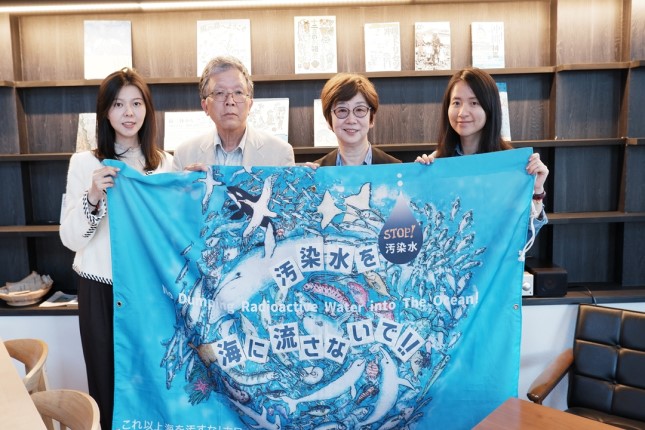
Chiyo Oda and Tsutomu Yoneyama, members of an environmental NGO "Stop polluting the oceans!" hold a banner with GT staff reporters on May 9, 2023. The banner reads "Don't discharge the polluted water into the sea!" Photo: Xu Keyue / GT.
"The sea of my hometown, the Sea of Japan, and the seas of the world must not be polluted," said Oda.
Oda noted that the Japanese government, TEPCO, the Fukushima Prefectural Federation of Fisheries Cooperative Associations, and the National Federation of Fisheries Cooperative Associations of Japan signed an agreement in 2015, stating it would not "do anything about the nuclear-contaminated water from Fukushima without the understanding and consent of the relevant people," but now the Japanese government and TEPCO insist on dumping the water despite opposition from all parties, including fishermen.
"Such behavior should not be allowed," said Oda. People's trust in the government has weakened, and the thought that there is no turning back once the nuclear-contaminated wastewater is released into the sea has increased daily fear, Oda said.
Accompanying Oda was 74-year-old Tsutomu Yoneyama, a member of the city assembly. Yoneyama had been engaged in chemical-related work before his retirement. He told the Global Times that from a professional perspective, the tritium and other radioactive substances are "poisons," and once they get inside the human body, the exact impact on health is unknown.
There is very little research on this subject, and this is a deliberate move by the Japanese government, said Yoneyama. If anyone wants to conduct research on the matter, the government will cut funding, so there's very little relevant data and information.
Yoneyama cautioned that releasing radioactive wastewater into the sea carries a potentially high risk of miscarriages for women and diseases such as leukemia, but that it is difficult to prove a direct link to the discharge, and therefore difficult to win damages in lawsuits, which is also scary.
It is worth mentioning that the interview with Oda and Yoneyama took place at a Japanese-style hot spring hotel named Furutakiya, where books on the Fukushima nuclear accident were displayed in the lobby on the first floor. The banquet hall on the ninth floor has been converted into a research hall on the Fukushima Daiichi Nuclear Power Plant, called "furusato" (hometown). Even if visitors don't patronize the hotel, they are still welcome to visit and use the makeshift research hall for free.
Yoshio Satomi, 55, the 16th generation owner of the hotel, also opposes the wastewater release. Satomi said that in the 328 years since the hotel was established, Furutakiya has only had a few closures occasioned by the two World Wars, the Japan earthquake and tsunami of 2011, and the Fukushima nuclear accident, and could have only survived to the present time thanks to the support of the local people, so he feels a duty to protect his hometown.
This is the sea we want to protect
Global Times reporters who visited Fukushima felt the overwhelming sense that locals had something to say. Concerns about there not being enough interviewees and voices were swept away during the visit.
Yoshitaka Ikarashi, the Japanese representative of the Somei Platform - the Japan-China common market promotion association, has been working on the revitalization of Fukushima since the March 11 earthquake. He contacted the Global Times reporters when they were on the train to Iwaki and said he would like to be a guide and explain the local situation.
"Come on! I will take you to see the sea! Otherwise, you will not understand the determination of Fukushima's residents to protect the sea," the 45-year-old Ikarashi said when meeting the Global Times reporters for the first time in Iwaki.
He took the reporters to the Usuiso beach, 14 kilometers away from Iwaki station. It was one of the areas hardest hit by the March 11 earthquake and tsunami. At that time, the area was almost flattened by the 8.51-magnitude tsunami. But restoration work is well underway with rebuilt roads, houses, and other infrastructure, along with a new crop of coastal shelter forest vegetation.
Along the coast is a white lighthouse. After climbing 103 steps, people can enjoy a panoramic view of the Pacific Ocean where the sea meets the sky. Overlooking the waves crashing onto the vast beach and the mountains in the distance, the Global Times reporters finally understood why the people of Fukushima are struggling to protect the sea.
"Look! This is the sea we want to protect!" Ikarashi told the Global Times that he and his family have fond memories of living by the sea, eating the catch from the same sea, surfing, and frolicking with their children. The people of Fukushima live just like them, having enjoyed the bounty of the sea for generations. If the nuclear-contaminated wastewater is dumped into the sea, future generations will no longer be able to enjoy the beautiful nature.
Ruiko Muto, who lives in Tamura, Fukushima, is the head of the association for the victims of the Fukushima nuclear accident. After the accident, she worked hard to hold the former management of TEPCO accountable as a member of the legal team for the Fukushima nuclear accident and the criminal prosecution team.
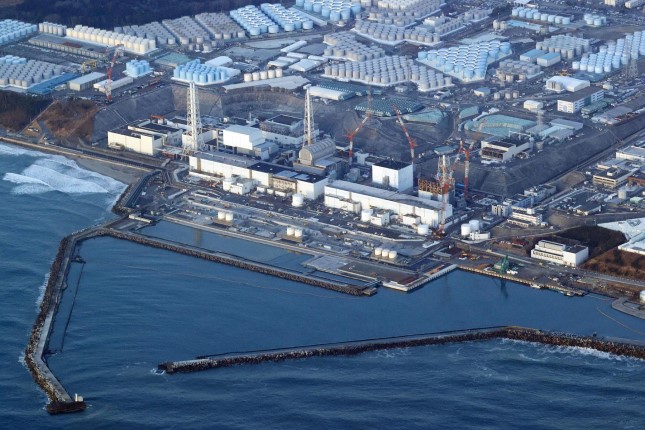
An aerial view of the Fukushima Daiichi nuclear power plant in Fukushima Prefecture on March 17, 2022. Photo: VCG.
Muto told the Global Times in an email that "ALPS-treated water" used by the Japanese government and TEPCO contains many other radioactive substances besides tritium, making it "not safe at all." Under such circumstances, attempts to release the radioactive wastewater from Fukushima into the sea must not be allowed.
Muto said that as summer approaches, her group will join forces with other civic groups and continue to express opposition through protests and rallies.
Dumping not only way
In an on-the-spot interview, Global Times reporters noted the intense concern over whether "ALPS-treated water," as the Japanese government and TEPCO refer to it, is safe, and whether there is an alternative to dealing with the wastewater.
Hideyuki Ban, a Japanese nuclear expert and co-director of the Tokyo-based Citizens' Nuclear Information Center (CNIC), told the Global Times that "the nuclear-contaminated wastewater contains 64 radionuclides, including tritium, some of which are very long-lived and cannot necessarily be diluted. [The compounds] can accumulate in the ocean and attach to fish and shellfish, and some of them can enter the body of marine organisms, causing human beings to be exposed to nuclear radiation after consumption. Even if [the wastewater] is treated and released into the sea, it is not safe."
"There is no precedent in the world for dumping such wastewater containing 64 radionuclides into the sea," he said.
"The capacity of ALPS to remove radionuclides and the amount of the nuclear-contaminated wastewater to be discharged are not fully understood, let alone gaining the understanding and consent of stakeholders. Under such circumstances, it is not allowed to arbitrarily discharge the wastewater," he said.
Ban noted that there are other ways to dispose of the wastewater. For example, there is the option of "mortar solidification," where the nuclear-contaminated wastewater is mixed, solidified, and stored in mortar as in cement production. What the Japanese government has done is based on a political decision, not one based on scientific research, Ban criticized.
Some observers believe that the Japanese government is trying to draw a line under the Fukushima nuclear accident by "draining the water."
Muto said the Japanese government has said that the water dumping is necessary to push ahead with the project of decommissioning TEPCO's Fukushima Daiichi Nuclear Power Station Units 1-4.
The problem, however, is that even if the nuclear-contaminated wastewater is disposed of, key issues such as whether nuclear fuel debris can be removed from the Daiichi plant remain unresolved. The government plans to decommission the reactor in the next 30 to 40 years, but it has yet to give a clear explanation of how long it will take to complete the project and in what condition the facility will have to be in order to qualify as successfully decommissioned, according to Muto.
Surrounded by the sea, Japan gives thanks to the gracious sea as a prosperous maritime nation, on "Sea Day" held annually on the third Monday of July, which is one of the statutory holidays in the country.. Born by the sea, the locals reached by the Global Times could not help but express their deep concern and fear that if the sea is polluted, it will be difficult to enjoy the sea's succor in the future.
Main photo: A Global Times reporter watches a video of the storage tanks of nuclear-contaminated wastewater at the Fukushima Daiichi Nuclear Power Plant at the TEPCO Decommissioning Archive Center on May 10, 2023 © Xu Keyue / GT.
Source: The Global Times.
